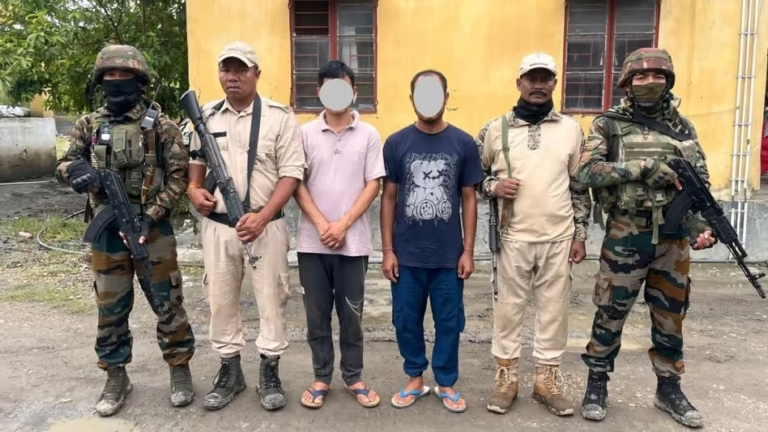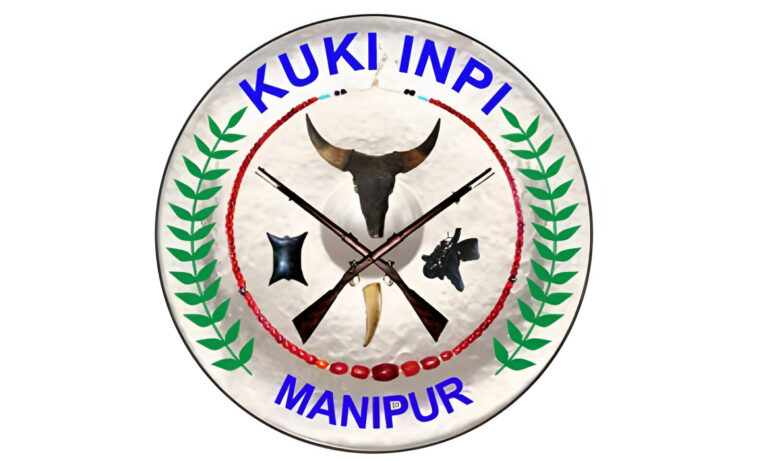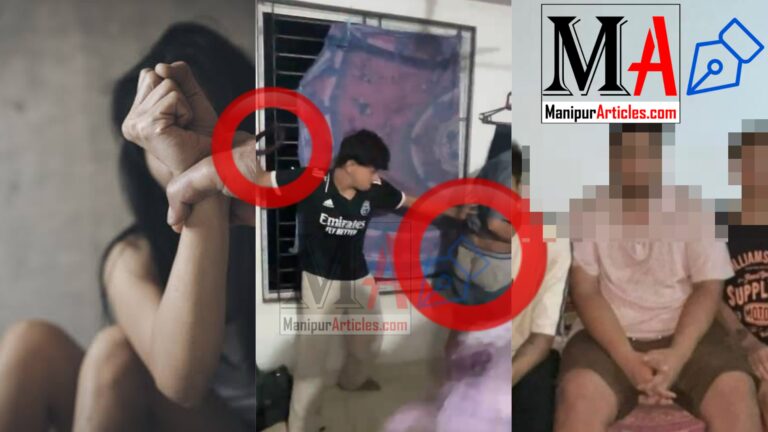Manipur’s Weapon Surrender Drive Gains Pace as 109 More Weapons Handed Over: A Step Towards Peace and Security
Introduction
Have you ever wondered what it takes to create real, lasting peace in a region troubled by the menace of illegal arms? In Manipur, a transformative change is underway. The state’s weapon surrender drive has recently picked up speed, with 109 more illegal weapons voluntarily handed over to the authorities. This isn’t just about collecting arms; it’s about building a safer future, restoring public trust, and taking a bold stand against violence. In this article, we’ll dive deep into the details of this initiative, explore its significance for society, and consider what the future may hold for Manipur and its people.
The Background: Why a Weapon Surrender Drive?
Imagine a neighborhood where every family lives in fear because dangerous weapons lurk in every corner. Now, picture that same community slowly reclaiming its peace as these arms are taken away. This is the vision behind Manipur’s weapon surrender drive. The region has long been marred by the presence of illegal arms that have fueled conflicts, crimes, and a general sense of insecurity. Over the years, these weapons have not only empowered criminal elements but have also undermined the state’s efforts to maintain law and order.
The drive is a proactive move by the government to encourage individuals and groups to voluntarily hand over their weapons. It’s like a community-wide detox—removing harmful elements to foster a healthier, safer environment. By creating a channel for voluntary surrender, the authorities are not only disarming potential threats but also building a bridge of trust between the state and its citizens.
The Dynamics of the Surrender Process
You might ask, “How does such a surrender drive work?” The process is both strategic and humane. Authorities set up designated centers where individuals can safely surrender their weapons without fear of retribution. These centers are often manned by trained personnel who ensure that the process is smooth, transparent, and, most importantly, non-threatening.
Consider it similar to turning in old, worn-out tools at a recycling center—except these “tools” are dangerous weapons. The government provides incentives and guarantees confidentiality to encourage participation. The 109 weapons that were recently handed over represent not just a numerical victory but a profound statement from the community: a clear desire to step away from violence and toward a more stable future.
Why 109 Weapons? The Significance of the Numbers
Numbers can be powerful storytellers. The voluntary surrender of 109 weapons might sound like a simple statistic, but it carries weight far beyond its digits. Each weapon handed over represents a potential crisis averted, a life that could have been lost, and a community inching closer to a secure future.
Imagine if every surrendered weapon is a barrier dismantled in the fight against crime and insurgency. This isn’t just about the sheer volume; it’s about the ripple effect that each handover can have on community morale and public safety. When people see tangible results from such initiatives, it boosts their confidence in the government and motivates others to follow suit.
Historical Context: The Long Road to Disarmament
Manipur’s challenges with illegal arms aren’t new. For years, the region has been caught in the crossfire of insurgency, crime, and political unrest. Over time, the circulation of illegal weapons has become deeply embedded in the socio-political fabric of the area. Many individuals, often driven by a mix of coercion, economic necessity, and ideological motivations, have ended up in possession of these arms.
Historically, disarmament drives have been fraught with challenges. In many regions, surrendering a weapon can be seen as an admission of guilt or weakness. However, the approach in Manipur is different. By offering a safe and stigma-free way to surrender arms, the authorities are addressing the problem at its roots. This isn’t about punishment; it’s about protection and rehabilitation. It’s like offering someone a second chance—a way to break free from a cycle of violence and start anew.
Community Trust and Government Initiatives
Trust is the cornerstone of any successful initiative, and the weapon surrender drive in Manipur is a testament to that. When the government takes steps that resonate with the everyday realities of its people, it helps bridge the gap between authority and the community.
Many locals have long been skeptical of government actions, often viewing them as heavy-handed or disconnected from ground realities. However, this voluntary drive sends a powerful message: the government is here to help, not to punish. It’s like inviting someone to a family dinner instead of locking them out of the house. The act of surrendering a weapon is symbolic of letting go of a violent past and embracing a future filled with hope and cooperation.
Socio-Economic Impact of Disarmament
The benefits of a successful weapon surrender drive extend far beyond immediate security concerns. When illegal arms are removed from circulation, the local economy and social fabric begin to heal. Businesses can thrive without the constant threat of violence, tourism can increase as the area becomes safer, and families can live without the fear that a stray bullet might shatter their peace.
Think about it: every weapon taken off the streets is a potential boost to economic growth. Reduced crime rates attract investors, create jobs, and lead to the development of infrastructure. The psychological impact is equally important. When people feel safe, they are more likely to engage in community activities, support local initiatives, and contribute positively to society. It’s a virtuous cycle—security breeds prosperity, and prosperity, in turn, strengthens community bonds.
The Role of Law Enforcement and Security Agencies
Law enforcement plays a critical role in the success of the weapon surrender drive. In Manipur, the police and security agencies have worked tirelessly to build relationships with the local communities, ensuring that the drive is seen as a collaborative effort rather than an imposition.
These agencies have not only been at the forefront of the operation but have also provided invaluable support by offering guidance, ensuring transparency, and maintaining the dignity of those involved in the surrender process. The act of handing over a weapon, especially one that may have been used or intended for violence, is no small feat. It requires immense courage and trust. By creating a respectful and supportive environment, the authorities have set a precedent for future disarmament initiatives.
Incentives and Support Systems
One of the key factors behind the drive’s success is the range of incentives and support systems offered to those who participate. The government understands that many individuals who come into possession of illegal arms do so under complex circumstances—sometimes due to coercion, sometimes out of necessity. Therefore, simply asking them to surrender their weapons without any form of support would be unrealistic.
Incentives might include financial rewards, vocational training, or even assistance in starting new livelihoods. These measures ensure that surrendering a weapon is not seen as a loss but as an opportunity for a fresh start. Imagine being given a chance to rebuild your life after years of struggle—a chance to trade in an old, dangerous habit for a path that leads to stability and success. This is the transformative power of the weapon surrender drive.
Challenges and Resistance to Disarmament
No initiative is without its challenges, and the weapon surrender drive is no exception. There can be resistance from those who are deeply entrenched in the world of illegal arms. For some, these weapons are a source of power, a tool for survival, or even a symbol of their identity. Convincing such individuals to lay down their arms is akin to asking a bird to stop flying—difficult, but not impossible.
There are also logistical challenges. Ensuring that the surrender process is secure, efficient, and accessible to everyone in the region requires careful planning and resource allocation. Moreover, there is always the risk of counterfeit surrenders or the possibility of weapons being exchanged under the table. However, the authorities are learning and adapting, employing technology and community engagement strategies to overcome these obstacles.
Technological Integration in the Surrender Process
In today’s digital age, technology can play a pivotal role in streamlining the disarmament process. In Manipur, modern surveillance tools, data analytics, and mobile applications are being used to monitor and verify the surrender process. These tools help ensure transparency, reduce the chances of error or corruption, and provide real-time data that can be used to fine-tune future initiatives.
Imagine using a smartphone app to report and verify your weapon surrender—a tool that not only makes the process easier but also builds a database that can help prevent future lapses. This blend of technology and human effort is the key to creating a sustainable and efficient disarmament program.
Lessons from Other Regions and Global Best Practices
Manipur is not alone in its efforts to disarm illegal networks. Similar initiatives have been successfully implemented in various parts of the world. For example, countries emerging from conflict have often relied on voluntary disarmament programs to stabilize their societies. These programs offer valuable lessons in terms of community engagement, incentive structures, and the integration of technology.
By studying global best practices, Manipur’s authorities can refine their approach and ensure that the drive not only continues to gain momentum but also achieves long-lasting results. It’s like learning a new recipe from a master chef—the right ingredients and techniques can transform a simple dish into a gourmet meal.
Impact on Regional Stability and Peace
The ripple effects of the weapon surrender drive extend well beyond the immediate collection of arms. At its core, the drive is about building a culture of peace and trust—a culture where violence is no longer the default mode of resolving disputes. As more and more people lay down their arms, the region inches closer to a state of stability and harmony.
Picture a crowded room gradually emptying of weapons, replaced by conversations and community gatherings. This visual represents the dream of a society where dialogue replaces conflict and trust triumphs over fear. Such a transformation can serve as a powerful example to neighboring regions, inspiring similar initiatives and creating a network of peaceful communities.
Future Prospects: What Lies Ahead?
As the weapon surrender drive gains momentum, many are left wondering: what’s next for Manipur? The future holds immense promise, but it also requires sustained effort. The immediate success of collecting 109 weapons is just the beginning. Long-term success depends on maintaining community engagement, continuing to offer incentives, and integrating technological advancements.
Looking ahead, the focus should also shift toward rehabilitating those who have surrendered arms. Support systems such as counseling, job training, and education can help these individuals reintegrate into society. The goal is to transform the surrender process into a comprehensive program that addresses not just the act of disarmament but also the underlying issues that led to the possession of illegal arms in the first place.
Community Narratives: Stories of Change and Renewal
Behind every statistic in the weapon surrender drive, there are human stories of change, hope, and renewal. Consider the story of a young man who, after years of living in the shadow of violence, finally made the brave decision to surrender his weapon. His act wasn’t just a personal victory—it symbolized a turning point for his entire community.
These stories, shared over community meetings and local media, serve as powerful reminders of what is at stake. They remind us that every surrendered weapon is a symbol of courage, a step away from a life of conflict, and a beacon of hope for a better tomorrow.
The Broader Impact on Manipur’s Social Fabric
The success of the weapon surrender drive is intricately linked to the overall health of Manipur’s social fabric. When individuals feel secure and supported, they are more likely to contribute positively to their communities. Reduced violence fosters an environment where children can play freely, businesses can flourish, and social bonds are strengthened.
In essence, the drive is more than just a disarmament program—it’s a catalyst for social transformation. The act of surrendering a weapon is not a sign of defeat but a bold declaration of a community’s commitment to peace and progress. It’s like replacing old, rusted tools with shiny, new ones that promise efficiency, safety, and a brighter future.
Collaborative Efforts: Government, NGOs, and Community Leaders
One of the key reasons behind the success of the weapon surrender drive is the collaborative effort between various stakeholders. The government’s proactive stance is complemented by the support of non-governmental organizations and local community leaders. This united front is crucial for addressing the multifaceted challenges posed by illegal arms.
By working together, these groups create a safety net that ensures no one is left behind. Community leaders play a vital role by acting as the bridge between the authorities and the local population, facilitating trust and open dialogue. Their efforts help dispel myths, address fears, and encourage even the most skeptical individuals to participate in the drive.
Conclusion
Manipur’s weapon surrender drive, marked by the recent handover of 109 weapons, is a landmark achievement in the quest for peace and security. It is a story of transformation—a narrative where community trust is rebuilt, violence is challenged, and a hopeful future begins to take shape. As the state continues to dismantle the networks of illegal arms, the spirit of resilience and renewal grows stronger every day.
This initiative stands as a shining example of what can be achieved when the government and its people work hand in hand. It teaches us that every surrendered weapon is a victory against chaos, every act of courage paves the way for a safer society, and every step toward disarmament is a step toward lasting peace.
As we look to the future, the road may still be long and fraught with challenges, but the momentum generated by this drive promises a brighter, more secure tomorrow for Manipur. Let this drive be a beacon of hope—a reminder that when communities unite against violence, even the darkest shadows can be dispelled by the light of collective resolve.
FAQs
- What is the main goal of Manipur’s weapon surrender drive?
The drive aims to disarm illegal weapon holders by encouraging voluntary surrender, thereby reducing violence and creating a safer environment for communities in Manipur. - How does the voluntary surrender process work?
Individuals can hand over their weapons at designated centers, where trained personnel ensure the process is secure, transparent, and free from fear of retribution, often with incentives and support measures in place. - Why is the handover of 109 weapons significant?
Each surrendered weapon represents a potential threat averted. The number 109 not only quantifies the scale of disarmament but also symbolizes the growing trust between the community and the government, inspiring further participation. - What role does technology play in the weapon surrender drive?
Modern surveillance tools, data analytics, and mobile applications are used to monitor the process, ensure transparency, and prevent misuse, making the operation more efficient and reliable. - What are the long-term benefits of a successful weapon surrender initiative?
Beyond immediate security, the drive fosters economic growth, strengthens community bonds, and supports rehabilitation programs, paving the way for sustained peace and social transformation in Manipur.




